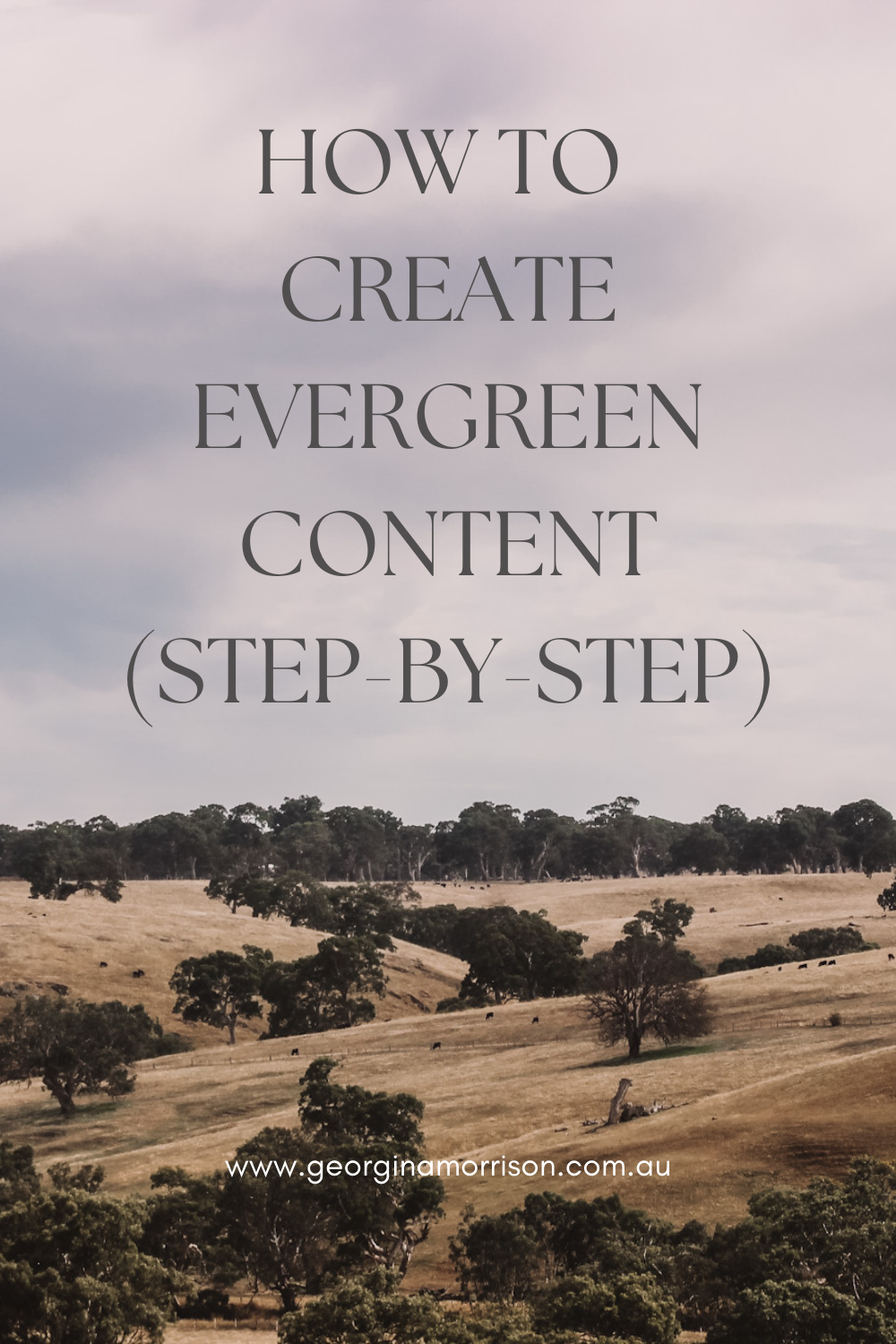What is an Evergreen Platform?
HOW TO CREATE EVERGREEN CONTENT
APPLE PODCASTS | SPOTIFY | GOOGLE PODCASTS
In the Season 2 premiere of the Courageous Creatives Podcast, we looked into one of the biggest things you can start today to elevate your business.
In this episode, we covered the following:
What 'Evergreen Platforms' are.
The 'Do’s' and 'Don'ts' of Evergreen Content.
My GOLDEN NUGGET for finding out what people are actually searching for.
How to generate ideas + create content consistently.
What is an Evergreen Platform?
AS the name suggests, ‘Evergreen’ is something that stands the test of time. Think of platforms like Instagram and TikTok as deciduous; they’re constantly in-flux, ever-changing, and all the content you serve up there loses its relevance very quickly. (They literally shed their leaves seasonally!) Whether it’s a photo or carousel with a shelf-life of 48 hours, or Reel or TikTok that lasts in circulation for up to two weeks – either way, there’s a lot of effort that goes into creating this content that doesn’t serve you long-term.
That’s why it’s SUPER important to ensure the longevity of your business, PLUS make sure that all of your hard work continues to work for you – by having an Evergreen Platform.
What is ‘Evergreen Content’?
‘Evergreen Content’ means that it is search-optimised – so if you even vaguely understand ‘SEO’, search-engine-optimisation, pretty much means the content is created with specific topics, keywords and information that people are generally always searching for. Think, if someone was interested in your industry or products, what do you think they’d typically be searching for on Google?
Essentially, an ‘Evergreen Platform’ is a space that allows your content to be discovered long after it’s been created. It’s sustainable, long-term, and continues to be relevant over time – in fact, in many cases, can become even more relevant the longer it’s out there.
What ‘Evergreen Platforms’ are there?
You might have a blog, a Pinterest account (that links to your blog), YouTube, Email Newsletters, a Podcast, or a published eBook (just to name a few of the most common ones!).
How do you create Evergreen Content?
The whole point of something that is ‘Evergreen’, is that it's timeless. So when you’re looking at generating topics, or content ideas, keep in mind that it’s best if they’re not associated with anything that’s time-sensitive.
Examples of content that is NOT Evergreen:
Anything relating to current trends (so if you have a business in homewares, textiles, fashion – anything that adheres to specific seasons within current years (like ‘Popular styles Spring 2022) etc.)
Anything relating to statistics, reports or information that dates
News articles (because they cycle through so quickly)
And you get the gist.
Examples of GOOD Evergreen Content:
How-To posts and videos
Guides (e.g. If you’re in the wedding industry, a downloadable guide/checklist for planning or choosing vendors etc.)
Your Top 10 x / Top 5 x – (for example, Top 5 Date Ideas in Melbourne, Top 5 Online Art Supply Stores)
Or anything educational (e.g. Teaching about a skill set / knowledge you have in a particular field) So for example, if you’re a photographer, this would be a post like: ‘Why you need to shoot your photos in RAW’
The main thing is that it’s relevant to your industry, your area of expertise, and your audience. There’s no point in writing a blog about ‘10 best family dog breeds’ if it’s not relevant to what you’re doing (if you’re Mummy Blogger, then sure – but if you're an artist, no).
Tips for starting today:
Do your market research:
First, work out which platform suits you best. This mainly depends on whether you know you can commit to it. In most cases, if you already have a website for your business or service, a blog is the easiest platform to get started with. (So that’s the example I’m going with for this.)
One of the best-kept secrets of the trade is Google Trends. It’s a game-changer. Want to know what people are actually searching for? And not only that, but get location-specific intel on your target audience? Get on this.
Put yourself into the mindset of the ‘consumer’:
If you were looking for something in a particular industry, or niche, what would you be interested in finding out? What do you want to know?
Also – without copying – what are other people in your industry talking about? What are frequently discussed topics or questions people are having to answer? Become an observer on social media, and analyse the conversations that are circulating.
Just start:
Done is better than perfect. Quality is always important, yes – but it’s more important for you to put pen to paper, and get something out there.
Set a realistic schedule:
There’s no use saying you’re going to write 1-2 blog posts a week, if you know you won’t be able to commit. Start by trying to create content once every 2-3 weeks, and increase frequency when you can.
Be ready to creatively cross-promote on your socials:
Whether that’s Instagram, TikTok or Pinterest, get create about ways you can promote your new content. People hate just being told ‘I wrote this blog post, read it’ – so how can you create content (e.g. a Reel or TikTok) that encourages people to learn more by reading your blog post?
About the show:
Courageous Creatives Podcast was launched as a place for creatives to feel inspired, supported and empowered. I truly hope, whichever phase you are at in your creative career, that you find something here. This beautiful community is growing day-by-day, and I’m so excited about the emerging opportunities to network with other creative trailblazers and grow as small business owners. I am the biggest believer that when we help each other along the way, the whole creative community succeeds. Let’s kick the ‘starving artist’ stigma back into the 20th century where it belongs, and build some amazing modern careers – on your terms!


